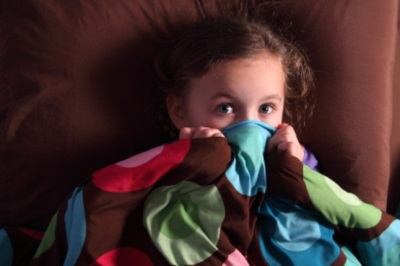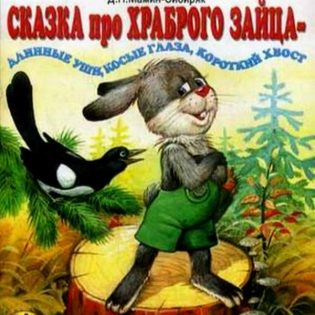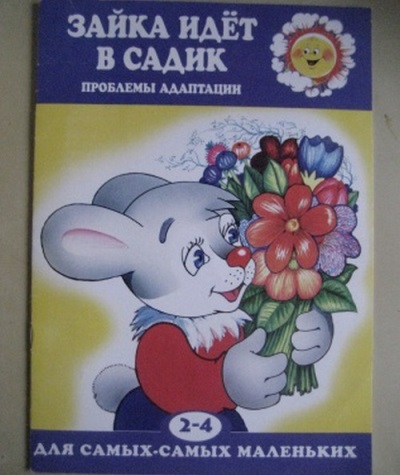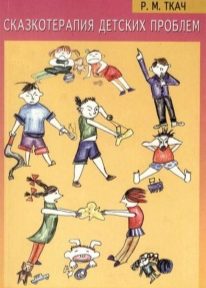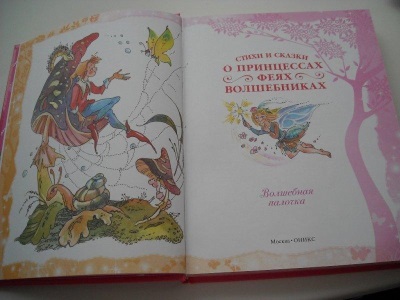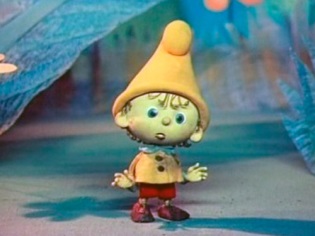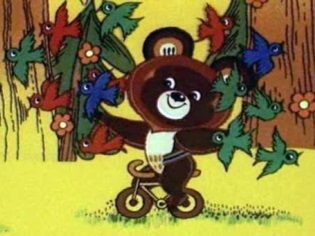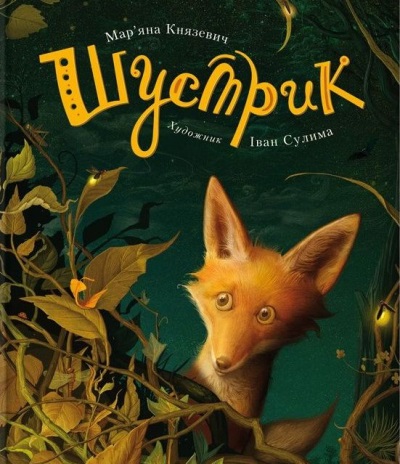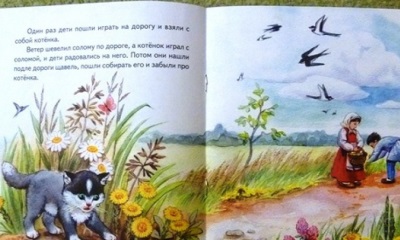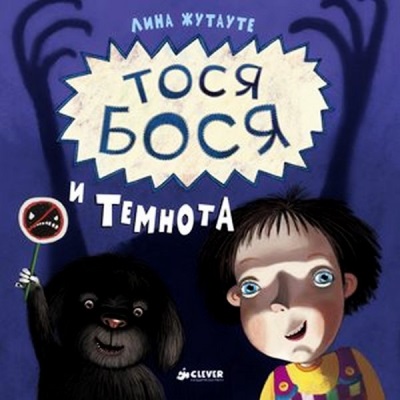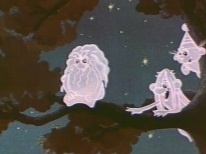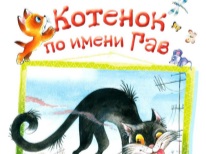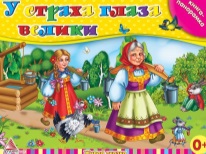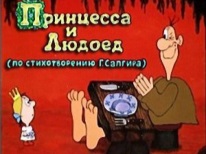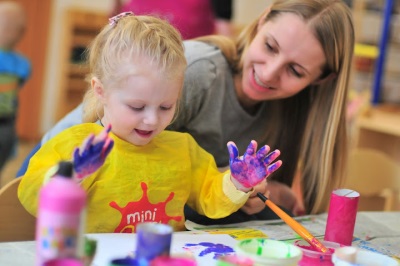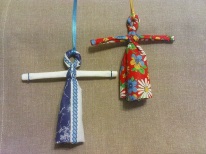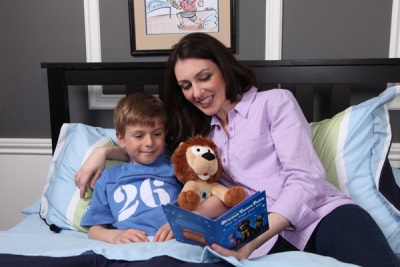Fairy tale therapy - the best fairy tales to combat the fears of children
Psychologists have many ways to treat children's complexes and fears, but one of the most favorite forms of work is fairy-tale therapy. It is with the help of a fairy tale that children in a playful manner can get rid of fears, overcome fear, become confident and independent.
What is it?
Even in ancient times, it was believed that a fairy tale heals the soul of man. And a fairy tale teaches life, and in a fairy form, its problem is easier to see and accept (not so annoying, not so painful). Many authors-psychologists have come up with their own fairy tales and stories for all occasions, and parents can only choose those who will assist the child.
When and why helps?
Fairy tales satisfy very important psychological needs in children:
- Be independent - they teach him, with the help of fairy tale heroes, to make their own decisions, make choices, rely on themselves and their strengths.
- To be active - the character of any fairy tale is always in search of action, he goes somewhere, is looking for something, helping someone, fighting with someone. That is, he teaches the child to express themselves and their activity in any situation.
- Need for socialization - learn to find a common language with other people, to show attention, sympathy and compassion. Choose adequate ways to communicate and take into account the interests of others.
Just imagine, your baby cannot fall asleep in his crib, it will be enough for you to tell him the fairy tale “How the bed was looking for its owner” and the problem will be solved.
The use of fairy tale therapy helps parents to easily and affordably solve any difficult situations of the child, whims, disobedience and stubbornness, and also teach how to build relationships with the child correctly.
Views and list of the best
The famous fairy tale therapist Zinkevich-Evstigneeva T. D believes that the whole concept of fairy-tale therapy is based on five types of fairy tales:
- Artistic ("Turnip", "Teremok");
- Didactic ("How the hare became bold");
- Psychocorrectional ("Naughty Masha");
- Meditative ("Pink dream");
- Psychotherapeutic ("droplet").
But in work with children's fears it is better to use psychotherapeutic fairy tales.
All children perceive the word “fear” in different ways and put their emotions and little experience into it. Every child, starting from birth, faces their fears, which appear as they grow up.
Psychologists distinguish fears by age:
- 2-3 years children experience night terrors, fear animals;
- at the age of 4, fabulous characters and insects get scared;
- in 5-6 years of disasters, school, fire, unhappiness;
- in 7-8 years - die and death of loved ones.
So where do children's fears come from? Maybe getting out of a drawer with toys or from a closet on a dark night? Children often fantasize and invent them in a similar way. In a dark children's room, fear can lurk everywhere. And under the covers, and under the crib, and for the battery. There are many ways to deal with fears, but today we will look at those tales that every parent can read or tell their child at home.
- Your baby going to kindergartenand you experience fear with him parting, then read the wonderful book by Olga Gromova “The Bunny goes to kindergarten”, which is addressed to children from 3–4 years old. Living with a character in all unfamiliar situations, your baby easily and happily adapts to any team.
- In the fight against children's fears, preschool parents will help the book tale therapist RM Weaver "fairy tale therapy of children's problems."There you will find the following tales in the fight against night fears: “My dragon friend”, “Useful fear” “Magic lantern”.
- Fears of vaccinations and doctors - "Brave Fly", "Stargazer in search of capricious," "Magic Wand."
There is another book of psychologists O.V. Huhlaeva, O.E. Huhlaeva "Labyrinth of the soul. Therapeutic Tales. It contains a collection of psychocorrectional and therapeutic tales for preschool and primary school age. They help to solve various problems and difficulties faced by the child. But now we will single out only those tales that concern children's fears.
- Fear of parting with my mother - “How a kangaroo became big”, “The Tale of Sunflower Seed”, “A Little Squirrel-Privetka”.
- Fear of independence - Anxiety and timidity "The tale of the raven", "The case in the forest."
- Fear of darkness, heightened anxiety, nightmares - “Brave ear”, “Brave dwarf”, “Bear and Baba Yaga”, “Baby elephant who was afraid of the dark”.
- Problems in learning, caused by fear of difficulties - "Kengureonok Vasya", "Shustrik and Obzhorkin."
- Fear of doing something wrong; fear of school, mistakes, grades - "The Tale of the Kitten."
Also on the shelves of bookstores can be found still a lot of decent books in the fight against fears.
The book of the Lithuanian artist and writer Lina Jutaute "Tosya-Bosya and the darkness" for 3-6 years. Character - a brave girl who is afraid of the dark. But one day she gains courage and decides to get rid of this fear (for children 3-6 years old).
Here is another favorite trick in fairy-tale therapy - the use of kinoskaskoterapii and multi-storytelling therapy.
3a such curious words hides the viewing of a film or cartoon film with a child, a fairy tale. We do not just turn on the child the first fairy-tale film or cartoon, but choose the story (fear) that is relevant for the kid today. Even the names of the cartoons themselves say what kind of children's fears the baby might encounter while watching.
- "Not a bit scary - a ghost";
- "The Princess and the Eater";
- "Grandma Ezhka and others";
- "Cockroach";
- "Fear has big eyes";
- "The Princess and the Eater";
- "Ahi fears";
- "Not a bit scary";
- "Monsters, Inc";
- "Fly Tsokotukha";
- "Little Raccoon";
- "About the hippopotamus, who was afraid of vaccinations";
- “Return Rex”;
- "Trusting Dragon";
- "Like a donkey, I was looking for happiness";
- "Is it easy to be brave";
- "Aibolit and Barmaley";
- "Kitten named Woof";
- "The bear and the one who lives in the river."
Options for working with a fairy tale
Drawing
Suggest the child to draw one or those moments that cause him fear, anxiety. This is doubly useful and will help him to free himself from disturbing feelings and thoughts. And secondly, the drawing can be a reason for conversation. Who is pictured? What do the characters think do? Why? What will happen next? You can make fear friendly. Suggest the child to cheer up your fear, make it kind, funny. Let him finish drawing in his drawings, bows, balls, etc.
The best weapon against fear is laughter, dress a terrible monster in funny clothes or put it on roller skates, or you can decorate it in bright colors. And then he will not be so terrible.
If the character in the picture continues to cause horror in the child, offer to destroy him. Let him break into small pieces, put him in a cage, ban the lock in the box, or make him a fancy snowflake. The main thing is the result: there was fear - and there is none.
Stages of work
As stated in one parable, “There lived a sorceress who flew around all the children in the world and presented them with the gift of composing a fairy tale. Therefore, they so easily come up with various stories, and mothers can only help them a little.
After all, we will compose a fairy tale for therapeutic purposes, for a child is a treatment. We will treat emotional pain and anxiety. We know that just because fears in our lives do not appear. They protect us from adversity, resentment, pain that we experience.And this means that when we compose a fairy tale, we must provide the child with emotional support, reassure and teach how to get rid of his fear.
How to write a fairy tale
In order for any story to gain the necessary magic power and help, it is necessary to adhere to certain rules of its composition.
1. It should reflect the child's fear, (the hare is afraid of being alone in a dark mink).
2. To offer that experience, having heard that the child could find a way out of the situation (mother gave him a magic flashlight or a favorite toy comes to the rescue). If the child is not able to make a choice on his own, then you can offer him your own solutions to the problem.
3. Coming up with a fairy tale with the baby, try to adhere to a certain sequence:
- The beginning of a fairy tale, a meeting with the characters of various and favorite characters or animals, toys.
- Then the hero of the tale meets with the fear that the baby is afraid of.
- The character shows the child various ways to deal with the problem.
- Victory, the end of a fairy tale, no fear, life is getting better.
At the end of the tale, for the final deliverance from fear, you can come up with an anti-awesome spell with your child.
Remember how the three little pigs from a fairy tale were cheering themselves on, chasing away their fear.
We are not afraid of the gray wolf
Evil Wolf, Gray Wolf
Where do you go silly wolf
Old, gloomy wolf.
It turns out that the wolf, though terrible, but stupid and old, and there is nothing to fear him.
You can find any other spell. Strange combinations of Sim Sabim and Ahalay-Mahalay are also suitable here. The main thing is for the child to know that these words banish fear and give strength.
And you can also come up with a talisman for fearlessness - a talisman that gives strength and protects against fear.
To make it work for the child, you need to do it yourself. In the manufacture can be used beads, pebbles, buttons, paper, shreds of cloth, candy wrappers, natural material - everything that will be at hand. Let the baby at your discretion or wear it around your neck, in your pocket or under the pillow, the main thing is that it performs its protective function and gives peace and confidence to the child.
Tips for parents
- Never scold a child for being afraid, but on the contrary, take care. If you have fears, ask the child questions: What does fear look like? Why did he come to us? In which world does it exist? What does he want? What can we do to make friends with him? What happens when we make friends with him?
- Accept and understand the fear of the baby and tell your story about how you were afraid in childhood and how you coped with this fear.
- Discuss the books you read, be interested in what movies and cartoons he watches before going to bed. However, this does not mean that the child should be completely isolated from the terrible tales, because sometimes they are useful.
- If your child has a weak type of nervous system, that is very sensitive, fearful, try to avoid screaming, swearing and scandals at home. Try to say affectionate words more often, hug the baby. If he, for example, was frightened by the noise, immediately explain where it came from, the pipe is noisy, etc. Be sure to consult a psychologist if your child has anxiety caused by fears for a long time.
You can learn more about fairy tale therapy by watching the following videos.

